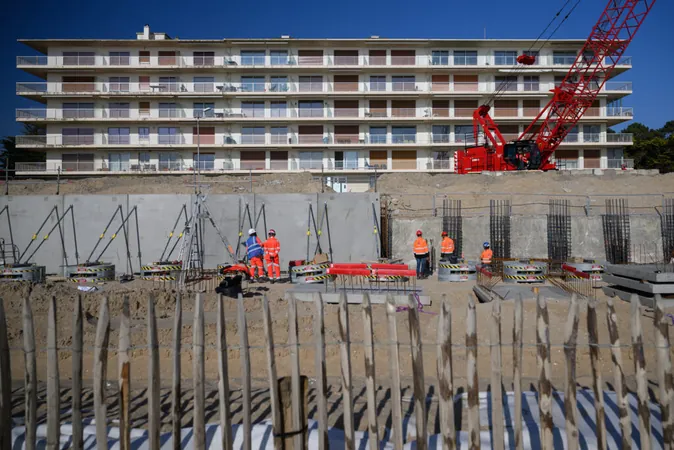
Nintendo Dials Down Expectations for Switch 2 Amid US Tariff Concerns!
2025-05-08
Author: Wei Ling
Nintendo's Cautious Sales Forecast Amidst Tariff Turmoil
Nintendo Co. has taken a more conservative stance on the anticipated sales of its upcoming Switch 2 console, announcing a lower forecast directly linked to uncertainty surrounding US tariffs.
The company anticipates shipping just 15 million units by March 2026—falling short of the 16.8 million-unit average predicted by industry analysts. Despite the buzz generated by strong pre-orders for the $450 device, Nintendo projects an annual operating profit of around 320 billion yen (approximately $2.2 billion), a figure that significantly lags behind market expectations.
Analysts Divided on Implications
Market experts are torn over this tempered outlook. According to Pelham Smithers, managing director at Pelham Smithers Associates, some will interpret it as a prudent managerial decision given the current risks, while others may see it as a sign of potential supply issues looming on the horizon.
A Trend of Conservative Forecasting
Nintendo’s modest projection for the Switch 2 reflects a familiar pattern during console transitions, where initial supply constraints often take center stage. The original Switch has set the bar remarkably high with lifetime sales of 152.12 million units as of 2024.
The company’s history tells a story of unpredictable console performance; while the Switch and Wii enjoyed tremendous success, the Wii U was a disappointing release, selling only 13.56 million units. This creates added pressure for the Switch 2 as Nintendo seems to be strategically managing expectations in the face of supply chain uncertainties.
Economic Shifts: The Tariff Impact
The looming threat of proposed tariffs presents a serious dilemma for the gaming console market, potentially pushing prices up by as much as 69%. Nintendo’s postponement of Switch 2 pre-orders may be indicative of concerns about tariffs that impose a 10% baseline on imports and additional charges on countries like Vietnam and Japan, integral to gaming hardware production.
In a similar vein, Microsoft has already announced 25% price increases for Xbox consoles as a preemptive measure against these tariffs.
Growing Market Challenges
These tariff effects hit amid predictions of significant expansion in the gaming console market, expected to grow from $31.37 billion in 2025 to $65.92 billion by 2034. The Consumer Technology Association warns that these tariffs could diminish US consumer purchasing power by $123 billion each year, potentially leading gamers to postpone their hardware purchases or gravitate toward alternatives such as cloud gaming.
Regional Dynamics Shaping Console Success
Nintendo's Switch 2 forecast also underscores the intricate regional dynamics at play within the gaming market. Growth is anticipated to be led by the Asia Pacific region, while North America grapples with potential price hikes from tariffs. The PlayStation 5 has already demonstrated significant disparity in regional performance, excelling in North America but falling short in Europe.
These variations highlight that the success of gaming consoles is increasingly contingent on regional market conditions—a challenge that goes hand-in-hand with supply chain disruptions and evolving trade policies.
The Future of Gaming Hardware is Uncertain
As Nintendo navigates these turbulent waters, the industry's response to global market dynamics, consumer behavior, and tariff-related challenges could redefine the landscape for gaming hardware releases.




 Brasil (PT)
Brasil (PT)
 Canada (EN)
Canada (EN)
 Chile (ES)
Chile (ES)
 Česko (CS)
Česko (CS)
 대한민국 (KO)
대한민국 (KO)
 España (ES)
España (ES)
 France (FR)
France (FR)
 Hong Kong (EN)
Hong Kong (EN)
 Italia (IT)
Italia (IT)
 日本 (JA)
日本 (JA)
 Magyarország (HU)
Magyarország (HU)
 Norge (NO)
Norge (NO)
 Polska (PL)
Polska (PL)
 Schweiz (DE)
Schweiz (DE)
 Singapore (EN)
Singapore (EN)
 Sverige (SV)
Sverige (SV)
 Suomi (FI)
Suomi (FI)
 Türkiye (TR)
Türkiye (TR)
 الإمارات العربية المتحدة (AR)
الإمارات العربية المتحدة (AR)